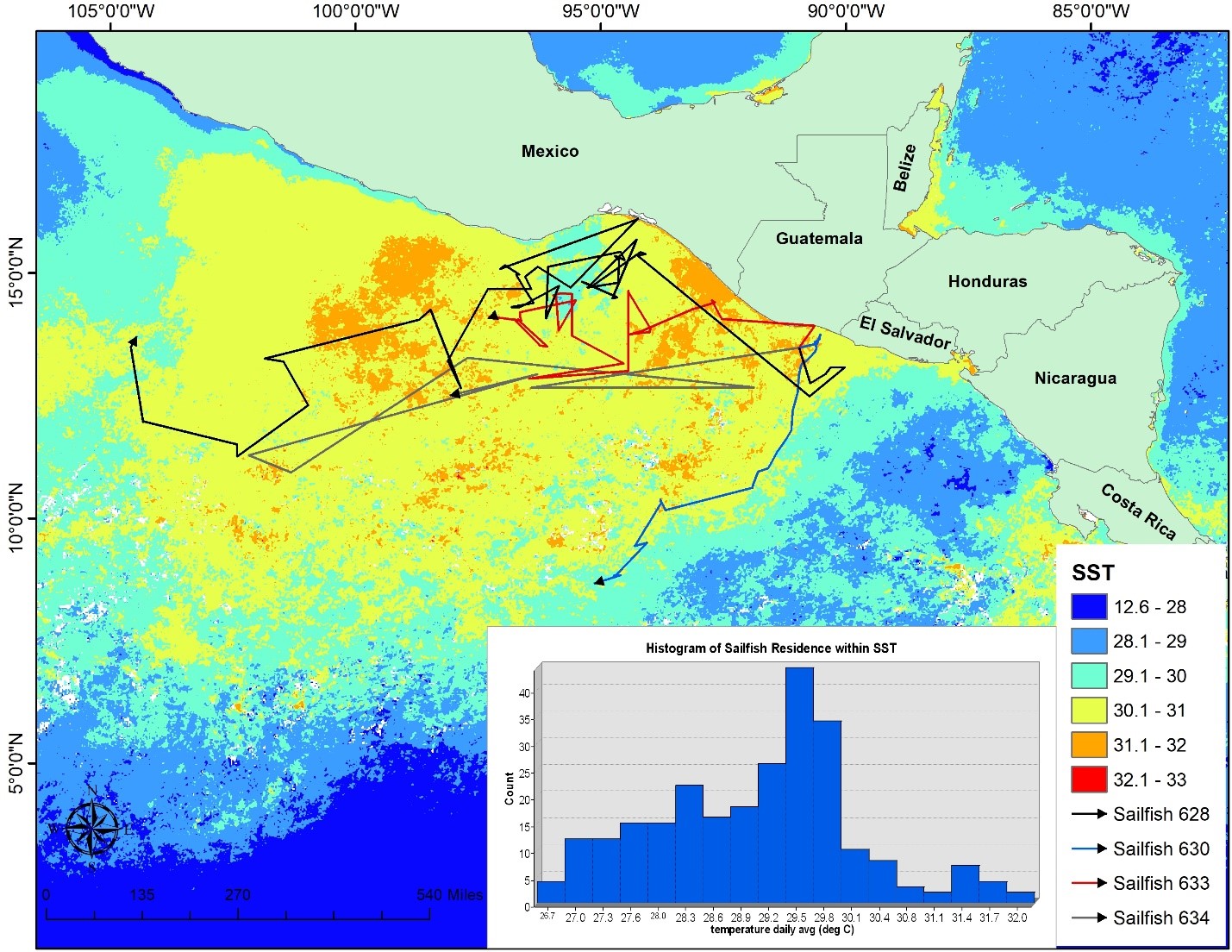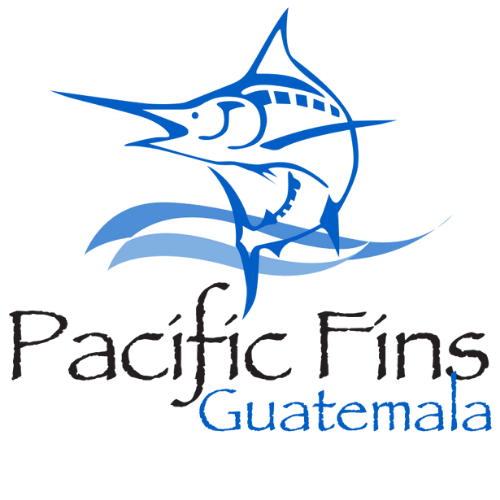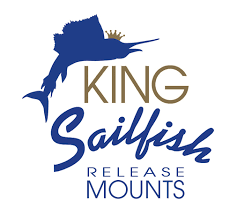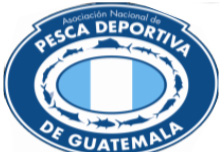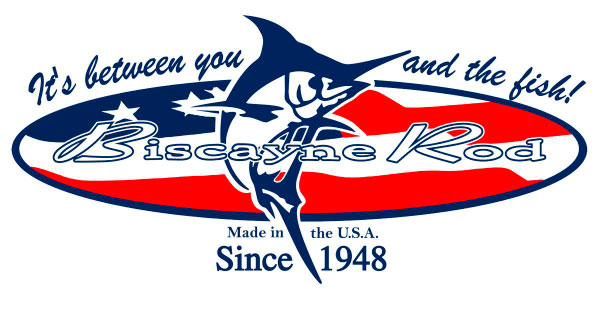In April 2018 at the Guatemala Celebrity Pro-am invitation fishing tournament, University of Miami researchers deployed 10 satellite tags off the coast of Guatemala to study the behavior and habitat use of sailfish in the Eastern Pacific Ocean (EPO). Of the 10 satellite tags, 7 produced high quality data sets while 1 tagged sailfish was caught by commercial fisherman off Mexico and 1 tagged sailfish died due to post release mortality. The final remaining tag status remains unknown and likely represents a mortality or fishery event.
Of the 7 tags with data, no sailfish traveled eastward toward El Salvador and Nicaragua while all tagged sailfish traveled westward, northwestward or southwestward (Figure 1 Top). This is consistent with the majority of sailfish tagged throughout the EPO.
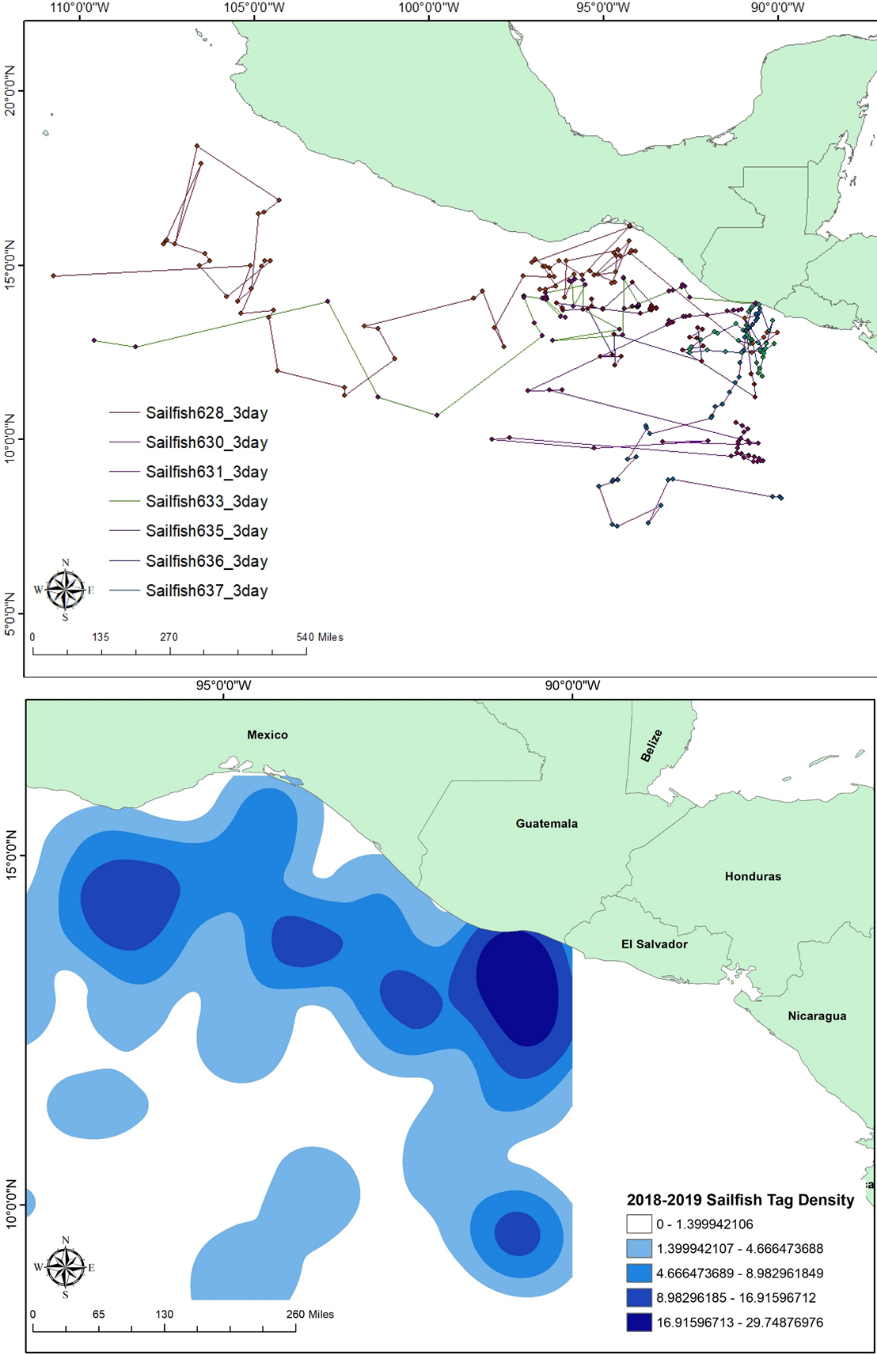
Figure 1: (Top) Map of seven satellite tags placed on sailfish off Guatemala in April 2018. (Bottom) Zoomed in map of sailfish tag density created from satellite tag data showing regions of highest sailfish presence in shades of blue with darker shades inidicating higher levels of tag density.
Sailfish traveled to regions known to be productivity hotspots such as the San Jose Canyon off the coast of Guatemala and the Tehuantepec upwelling system south of the Mexican coast indicated by the darker blue in Figure 1 bottom plot. Tagged sailfish tended to immediately leave the tagging location after the tagging event but only 2 of these made long distance migratory movements outside of the EPO region toward the west. The majority of sailfish stayed in the region with multiple sailfish returning to the relative location where tagging occurred.
The likelihood of sailfish to remain coastal within the Guatemalan economic zone region is critical for management and conservation as measures to protect this species within Guatemala may be more effective than in other locales given the high density of local sailfish. Through regional conservation regulations such as those put in place by the Guatemala Sailfish Conservation Commission, it will be possible to maintain the high catch rates seen historically in the region.
Sailfish preference for specific habitat ranges can be obtained from the tagging data and when analyzed next to sea surface temperature, a clear preference for the EPO warm pool is present (Figure 2). Here we see a preference for waters between 29o and 30o Celsius with a range of 26o to 32o Celsius. This is just one example of sailfish preference estimation made possible with the use of satellite tagging data and available satellite oceanographic information.
